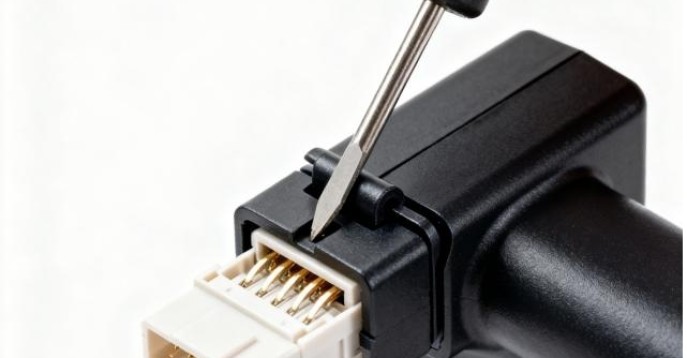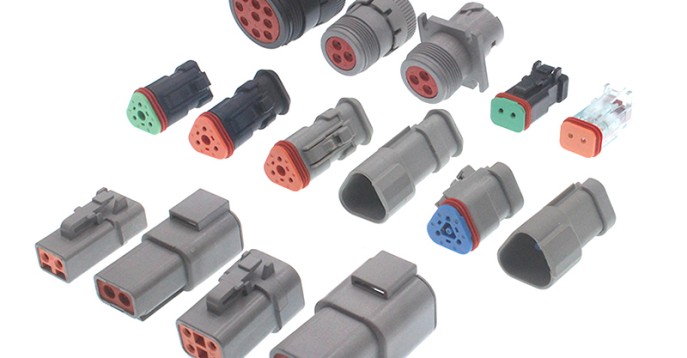With the rapid development of vehicle intelligence and networking, the requirements for signal data transmission rates for vehicle functions are gradually increasing, and there are higher and higher shielding requirements for signal lines that can affect driving experience and driving safety.
The operation and safety information of the vehicle needs to be accurately transmitted through the low-voltage communication harness (CAN, Ethernet cable, etc.). If the electromagnetic compatibility of the vehicle is poor, the electromagnetic radiation will cause delays, errors or even failure of the transmission of CAN bus information, which will cause electric vehicle safety accidents.
The root of the problem that affects the signal quality is reflection, and impedance matching is the key to avoiding reflection. The wire material and internal structure, shielding, twist distance, branches, etc. These factors that affect impedance will ultimately affect EMI and EMS.
Choose special wires to avoid EMC problems
Radio antennas, navigation antennas, video cables, USB cables, etc. are all high-frequency signal lines. For these cables that are susceptible to electromagnetic interference, shielding protection is required, usually using two methods: adding a shielding layer and twisting the wires.
The shielding layer should be grounded at both ends or at one end according to specific needs, and sometimes directly connected to the equipment housing and grounded through the equipment. The function of shielding is not only to prevent the wiring harness from being affected by external interference, but also to prevent the signal on the wiring harness from causing interference to external equipment.
For high-voltage wiring harnesses, using shielded high-voltage wiring harnesses and connectors is also an extremely effective way to reduce unnecessary electromagnetic interference. Experiments have shown that shielded high-voltage wire harnesses and connectors can effectively reduce unwanted interference in the frequency range from 100kHz to 200MHz.
The function of twisted pair is mainly to suppress common mode interference. The electromagnetic fields induced in the twisted pair cancel each other, thereby reducing the interference of the external electromagnetic field on the twisted wires and the interference between the twisted wires. Shielded twisted pair wires are commonly used in parts such as CAN wires, Flexray, ABS wires, inverter power supplies and grounding wires.
The design of shielding layer and twisted pair can refer to the following rules:
● The shielding layer of the special wire should extend as far as possible to the end of the core wire;
● The untwisted distance of the twisted pair at the end or the connecting nail should not be too long, otherwise the shielding effect will be lost;
● The shielded wire or twisted pair should use adjacent pins when passing through the coupling connector to avoid extending the degumming distance;
● Stranded wires must be used for the signal wires and ignition wires of airbags and collision sensors;
● Use twisted pair for low-frequency symmetrical audio signals;
● Use shielded wire for asymmetrical audio signals.
For non-special wires, the anti-interference ability can also be improved by reducing the area of the wire harness to receive interference. The wire harness should be designed with the minimum length, minimum impedance and minimum loop area. It is best to use twisted pair wires and other small loop areas for power supply. Way. Increase the distance from the equipment to the interference source: Under the condition that the layout of the interference equipment remains unchanged, modify the installation position of the sensitive components to increase the distance to the interference source.
Electromagnetic Compatibility Research Objects and Basic Measurement Methods
Electromagnetic compatibility research objects are everywhere.
● All kinds of man-made noise, such as corona noise of transmission line, automobile noise, noise of contactor itself and noise caused by discharge when conductor is opened, noise of electric locomotive, urban noise, etc.
● The mutual influence of various public utility equipment (transmission lines, communications, railways, highways, petroleum and metal pipelines, etc.) in the shared corridor.
● Reflection problems caused by super high-rise buildings, power lines, towers and other large buildings.
● Effect of electromagnetic environment on human beings and various creatures. These include the influence of power frequency fields such as strong wires, medium and short wave and microwave electromagnetic radiation.
● The influence of nuclear electromagnetic pulse. The electromagnetic pulses generated by high-altitude nuclear explosions can damage the command, control, communication, computer and reporting systems on the ground in a large area.
● detection spectrum (TEMPEST) technology. Its essential content is a series of research work on the electromagnetic radiation and information leakage of information equipment from the aspects of information reception and protection.
● Malfunction of electronic equipment. In order to prevent malfunction, measures must be taken to improve the anti-interference ability of the equipment.
● Spectrum allocation and management. The radio spectrum is a limited resource, but it is not expendable. It should be managed scientifically and fully utilized.
All of the above are the research objects of electromagnetic compatibility.
Basic Methods of Electromagnetic Compatibility Measurement
● Electromagnetic radiation emission measurement system Electromagnetic field radiation measurement is to measure the electromagnetic radiation intensity of electrical and electronic equipment
● Electromagnetic radiation sensitivity test system:
The measurement methods are mainly composed of the following
● Use the transmitting antenna to generate a disturbance electromagnetic field,
● Use TEM cell or GTEM cell to generate disturbance electromagnetic field, 3) Use reverberation chamber to generate disturbance electromagnetic field,
● Generate a magnetic field with a Helmholtz coil
● Conducted emission measurement system:
There are the following measurement methods
● Through the line impedance stabilization network LISN,
● Use a current probe to measure the interference power on the power line,
● Measure the interference power on the power line with the power absorption clamp
Conduction sensitivity test system:
There are several ways to enter the interference signal:
● Enter the interference signal to the line under test through the transformer,
● Enter the interference signal to the line under test through the coupling/decoupling network,
● Enter the interference signal into the line under test by injecting the probe.
Challenges faced by vehicle EMC and related national standards:
The integration of high-voltage components will bring more serious electromagnetic interference, and the electromagnetic compatibility design challenges of high-voltage components are even greater – the intensity of electromagnetic interference is high, and the coupling paths between components are complex.
The expansion of automotive intelligence and networking functions brings new challenges to comprehensive and accurate simulation of working conditions and detection of EMC problems, because the current EMC test needs to be arranged in a dark room, the limitations of the site and test equipment, how to impose disturbance or Under the premise of receiving radiation from vehicle components, it is currently difficult to use simulated working conditions to stimulate the many sensors of the vehicle to respond close to the real working conditions. Moreover, there is no very clear standard to define the tolerance level in dealing with electromagnetic interference. Still being perfected.
Both EMC testing and rectification involve system-level improvement, and the improvement cycle is long and expensive, which brings great cost pressure to car companies. With the integration of more electrical components and control functions on the vehicle, the components need to interact with the vehicle EMC standards.
The automotive industry has specified strict electromagnetic compatibility standards for vehicles. Parts must first pass the electromagnetic compatibility test. After being integrated into the vehicle, the vehicle must also pass the comprehensive assessment of electromagnetic compatibility.
With the development of new energy vehicles, the relevant standards and test methods at home and abroad are also constantly being improved, and the relevant international standard series have been updated at present.
The corresponding domestic electric vehicle standard system is also being updated rapidly. However, due to the inertia of traditional methods, most people’s understanding and conventional practices of vehicle electromagnetic compatibility are standards-oriented, that is, the goal of electromagnetic compatibility design verification is usually to meet standards or regulatory requirements; for new energy vehicles, technical The development and application technology is beyond the standard development. Although the existing standards have put forward the requirements for test facilities and products, the details need to be supplemented and improved; the guiding role for product development and design is still lacking. The oriented approach does not guarantee the electromagnetic compatibility of new energy vehicles.
For the high-voltage electric drive system, the existing standards need to be further standardized in terms of the selection and definition of parameters such as dynamic simulation state, test layout, charge and discharge mode, speed, and power; in terms of design guidance, after the integration of shielding, filtering, and grounding systems Relevant standard norm systems should be established in terms of common mode interference suppression and safety criteria.














